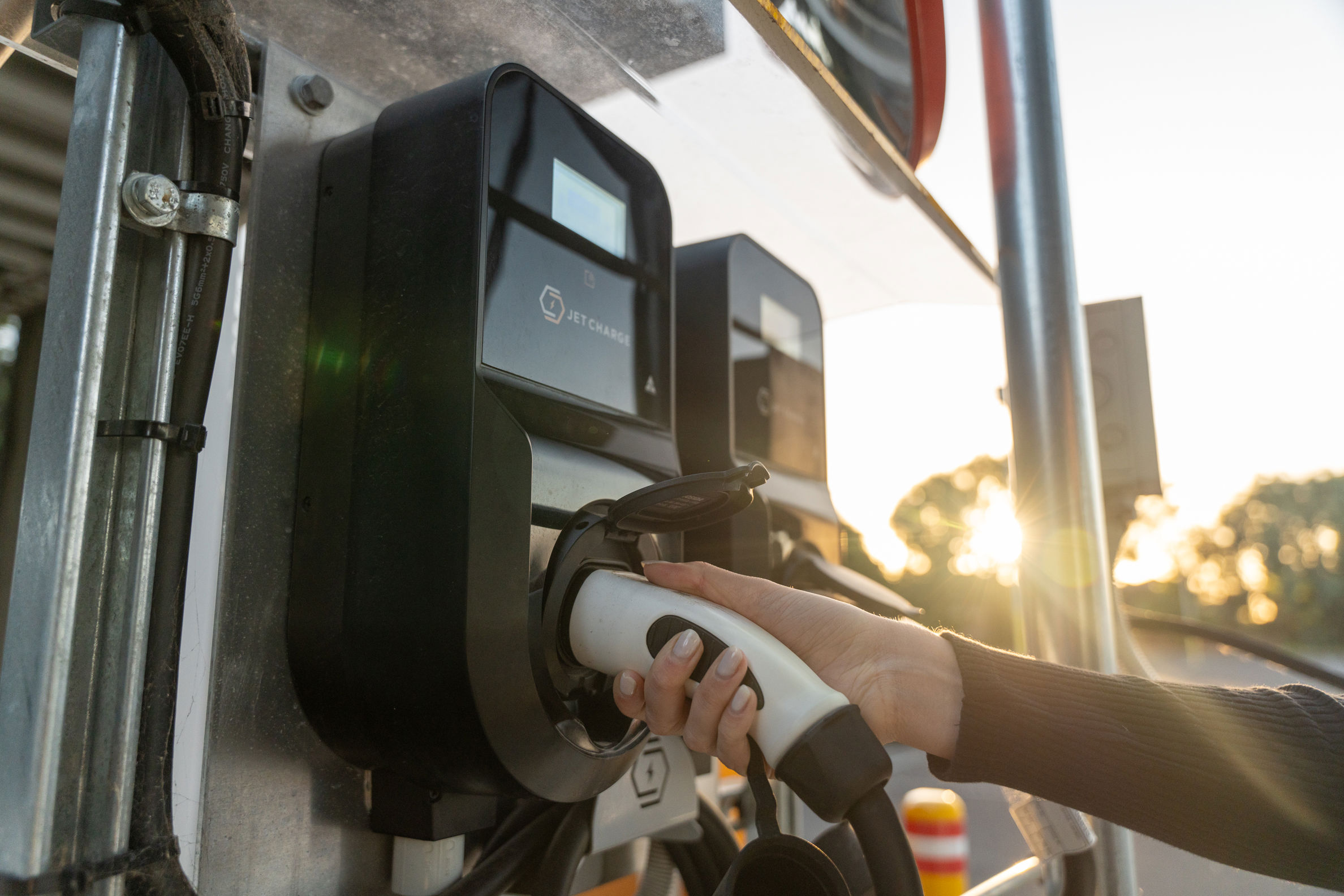Siltrax develops novel silicon-based fuel cell stack to drive energy efficiency

10 September 2024
An innovative form of hydrogen fuel cell technology that makes lighter, more efficient fuel cells has won backing from the CEFC. The US$7million CEFC commitment will help Australian startup Siltrax develop the technology to power a range of heavy duty and materials handling vehicles, to help reduce emissions and contribute to Australia’s hydrogen roadmap.
Siltrax’s novel fuel cell technology uses bipolar plates made from silicon rather than the more commonly used graphite or metallic materials, to produce thinner, more efficient plates.
Silicon is a chemically durable material that can withstand high pressure, high temperature, and acidic environments without any degradation. Its use has the potential to reduce costs for fuel cell production and make energy producing technology more durable, efficient and powerful.
The use of silicon also allows Siltrax to leverage the existing PV supply chain for both raw materials, and production equipment.
Advances in fuel cell technology can have a significant impact on reducing our transport emissions. Using silicon instead of metal has many advantages, including corrosion resistance, its reduced bulk which enables better power density, and potentially lower cost.Ben GustVirescent Ventures Manging Partner
The Siltrax technology has been developed by renowned solar entrepreneur Dr Zhengrong Shi and semiconductor expert Dr Jim Zhu, who bring extensive experience from their backgrounds in silicon-based materials research. Dr Shi founded Suntech Power, the world’s first GW scale solar foundry, and has deep experience in both technology commercialisation and manufacturing scale-up.
The CEFC investment is managed by specialist climate tech venture capital manager Virescent Ventures. It will help Siltrax build out its Australian research and development team to focus on fuel cell systems engineering and local commercialisation opportunities.
Siltrax’s first target market is stationary power generation, where fuel cells generate electricity through a mechanism that unlike other forms of power generation, does not require combustion.
The Siltrax technology has potential to be used in the heavy duty, long-haul trucking sector, enabling range, refuelling time and payload capacity similar to diesel trucks. 1 It also helps reduce emissions in otherwise hard-to-abate areas where current battery technology may not be able to support the range and required duty cycles.
Other later stage uses for the Siltrax technology may include materials handling vehicles with space constraints like forklifts, and those with faster refuelling time requirements, and in aerospace applications. The company is also progressing the development of hydrogen electrolysers utilising the same core technology.
CEFC Chief Asset Management Officer Sara Leong said: “Transitioning to a low emissions economy requires a range of technologies and that’s why the CEFC backs Australia’s climate tech pioneers. Advancing hydrogen fuel cell technology is a critical enabler that will help us develop the hydrogen value chain, as well as accelerate development of Australia’s hydrogen industry.”
Siltrax Founder and CEO Dr. Zhengrong Shi said: “The PV industry’s growth has been incredible over the past twenty years, as prices have dropped from USD$4-5/W to today’s USD$0.3/W. Siltrax builds upon the foundations of PV and semiconductor manufacturing, and is able to utilise the existing supply chains, technologies, and talent pool to the fullest.”
Virescent Ventures Manging Partner Ben Gust said: “Advances in fuel cell technology can have a significant impact on reducing our transport emissions. Using silicon instead of metal has many advantages, including corrosion resistance, its reduced bulk which enables better power density, and potentially lower cost by utilising silicon manufacturing techniques optimised in the solar industry.”
Fuel cells directly convert the chemical energy in hydrogen to electricity with only water and heat as byproducts, and do not emit carbon dioxide. Fuel cells have been identified by the IEA as being among the important technologies that can help meet the challenge of energy transition.2
The transport sector is Australia’s third largest source of greenhouse gases, responsible for around 22 per cent3 of national emissions, and is trending higher4. The Australian Hydrogen Market Study, commissioned by the CEFC, found that heavy haul transport is likely to be dependent on green hydrogen to reduce emissions and hydrogen fuel cell powered trucks are forecast to be cheaper in the long term than internal combustion engine vehicles as technology cost reduces and utilisation of infrastructure improves5.
1 IEA, Global Hydrogen Review, 2021. p79.
2 IEA, The Future of Hydrogen, 2019.
3 Australian Government, Quarterly update of Australia’s National Greenhouse Gas Inventory, December 2023, 2024. p17.
4 Australian Government, Department of Transport and Infrastructure Net Zero Consultation Roadmap, 2024, p3.
5 CEFC, Australian Hydrogen Market Study, 2021. p54.




